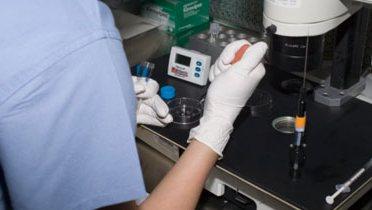INTRODUCTION
Larry, a pediatrician, and David, a wills lawyer, meet in their late 20s, fall in love, and marry on June 15, 2025 in Indianapolis. Three years later they take in a foster child for eight months, and find the experience rewarding. By 2030, they are well-enough established in their careers to think about having their own child. Larry’s 24-year-old sister Marge has agreed to donate her eggs, and David will provide the sperm, so that each partner will have a genetic connection with the child. They work with an agency that matches couples with gestational surrogates, and settle on Janice, a 34-year-old nurse and mother of two, who is willing to help them in exchange for a $75,000 fee.
In the process, Larry and David come to realize that they would prefer to have a male child that shares their sexual orientation. Reproductive cloning won’t do—the FDA hasn’t yet certified it as safe and effective. But gene studies show a strong correlation between five genes and sexual orientation in both males and females. Larry and David discuss with their doctors the feasibility of screening the embryos they create with Marge’s eggs for male genes linked to a homosexual orientation. The clinic doctors are experts in embryo screening and alteration, but cannot guarantee that the resulting embryos will in fact turn out to be homosexual. To increase the certainty, they will insert additional “gay gene” sequences in the embryos before they are placed in Janice. Embryos not used will be frozen for later use or for stem cell technology to create eggs from Larry’s skin cells so that the resulting child would be the genetic offspring of both Larry and David.
The scenario painted here is futuristic, but only partially so. The techniques to be used—IVF, egg donation, and gestational surrogacy—are now widely available, as is embryo screening for genetic disease and gender. Same-sex marriage is likely to be soon recognized as a federal constitutional right. No “gay genes” have yet been identified. But genomic knowledge is mushrooming. The genetic code for nonmedical traits such as sexual orientation may be unlocked in coming years. Altering a person’s genes by inserting or deleting DNA sequences is still theoretical, but great progress has occurred with animals. Cloning is unlikely to be available by 2030, but producing gametes from somatic cells in a person’s body might by then be feasible.
Technical prowess, however, should not be confused with ethical and social acceptability. The 30 years between 1980 and 2010, when assisted reproduction, egg donation, surrogacy, and genetic screening of embryos became widely used, has been fraught with ethical, legal, and social controversy. These techniques pose major challenges for deeply held values of autonomy, family, the welfare of children, and the importance of reproduction to human flourishing. They call starkly into question the meaning of kinship, parenthood, and the degree of control which parents should have over their children’s genes. Increased genetic screening, alteration of genes, and cloning or obtaining gametes from somatic cells will be even more contested.
In America, the law is usually entwined in public controversy, especially when sexual, family, and reproductive norms clash. Yet these techniques were launched and found a home with little legal scrutiny. Outside of abortion, the law has been largely absent from battles over reproductive and genetic technologies. As a result, there are few Supreme Court precedents directly on point. Legislation, for example, has not restrained the use of cutting-edge genetic technologies such as embryo screening and manipulation. Reproductive cloning, though not yet feasible, is highly controversial but most states have not banned it. When the law has inched forward with legal solutions to particular problems, such as disputes over lost or frozen embryos or how to share parentage among gamete donors and rearing parents, new techniques with new problems have sprung up. In Larry and David’s case, it is the desire to choose their child’s gender and shape its sexual orientation that is novel and challenging.
That situation might change as techniques evolve to expand choice over the genetic characteristics of children. Eventually, legal limits will be imposed, limits which will raise questions about the constitutionality of restrictions on reproductive and genetic choice. The Constitution, however, was written in an era when none of these techniques were practiced or even imagined. Indeed, it said nothing about reproduction at all. As a result, the Supreme Court has spoken often and most recently about abortion and contraception but seldom about engaging in reproduction as such, and not at all about parents’ choosing the genes of their offspring.[i] When it did speak against forced sterilization of criminals, it assumed heterosexual and coital conception.[ii] The principles underlying those decisions provide general guideposts for procreative rights in a technological age, but the specifics of those rights will have to be teased out from the logic of those precedents as new techniques challenge old values and new options for reproduction open. Larry and David and thousands of other couples will need answers so that they can have the families they wish.
Gonzalez v. Carhart, 550 U.S. 124 (2007).
[ii]
Skinner v. Oklahoma, 316 U.S. 535 (1942).
The Brookings Institution is committed to quality, independence, and impact.
We are supported by a diverse array of funders. In line with our values and policies, each Brookings publication represents the sole views of its author(s).




